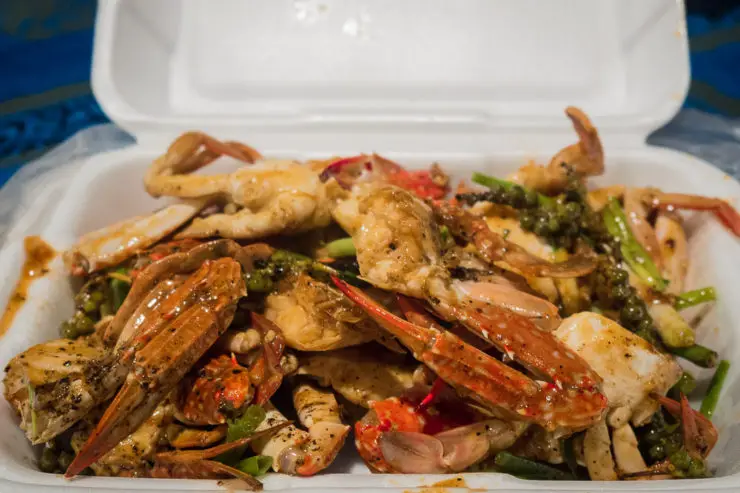As an Amazon Associate I earn from qualifying purchases. Please read the disclaimer for more info.
An Eating Guide to Kep Crab Market
Visiting the Kep crab market, and eating the famous Kampot pepper crab, were the primary reasons for travelling to this part of southern Cambodia.
The town of Kep, located an easy bus ride from Phnom Penh, has a small seaside village feel, and is home to a unique market where the most important product for sale is usually hidden away from sight, with crab pots kept in the ocean, only to be retrieved when selling to customers.
In this guide, we will step through the layout of the market, run through the process of buying, cooking, and eating the crabs, as well as looking at the rest of the market.
Kep Crab Market layout
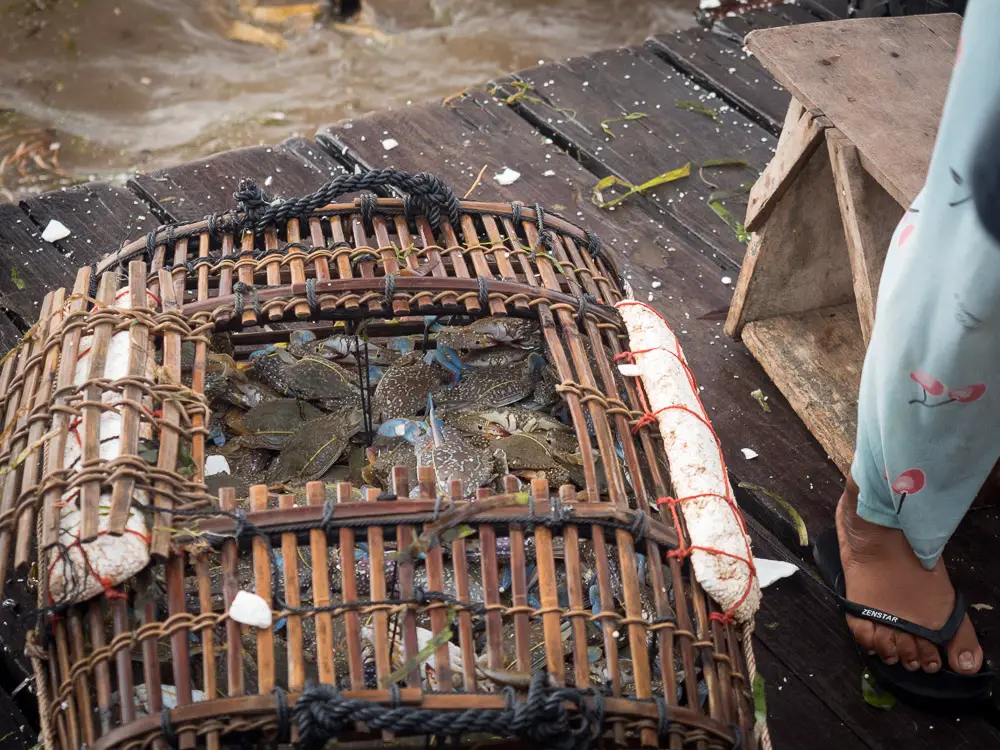
A crab pot just pulled from the ocean with live crabs ready to be sorted through
The crab market in Kep is relatively small, but always busy with customers looking to buy the best fresh crabs and other seafood, from relatively early in the morning through to late into the night.
When we first arrived at the crab market, we took our time exploring the stalls and getting a feel for how the market worked, what food options were available (other than crab), and how to order.
The main reason that the Kep Crab Market doesn’t seem very big is that the majority of the crabs are kept alive in crab pots located in the water off the main pier. There are dozens of crab pots in the water, and whilst this significantly reduces the storage space on the pier, it also means that vendors need to retrieve their pots when customers are looking to buy.
Most of the selling space is taken up with vendors selling other fresh seafood such as prawns, squid, clams, as well as baskets of mud crabs.
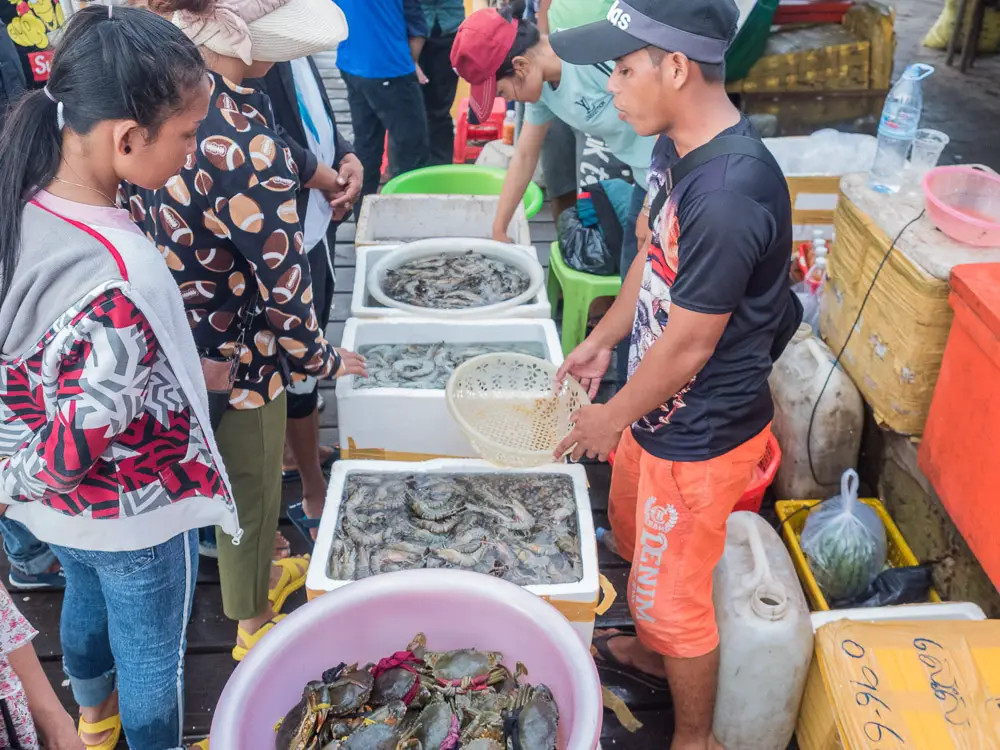
Fresh seafood is available not just crabs
Also dotted along the pier are cooking stations, where crabs and other seafood are cooked to order, either to be eaten at the market, to taken away, usually by the locals.
Inside the market, there are a number of barbecue stations, where seafood is grilled over coals with the aromas being quite appetite inducing.
There are a few other vendors at the market including fruit sellers and noodle soup stalls.
And most importantly, in the middle of the market, there are tables where you can eat and enjoy your food. These tables are run by the drink vendors, so ordering a drink is the price of taking a seat.
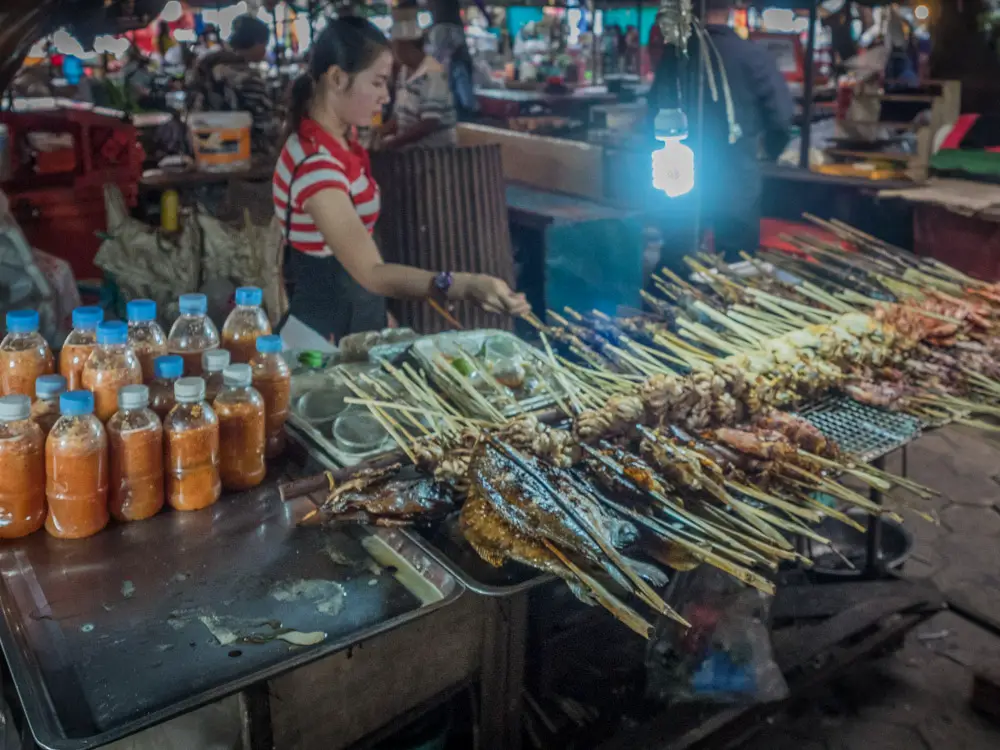
One of the barbecue stations inside the market
Ordering at Kep Crab Market.
There are many different types of seafood to be eaten at the crab market in Kep, but most people are coming for the crabs, so this guide will step through the process of buying and cooking crabs.
The first step is to find a crab vendor. This is very easy because as you walk along the pier many vendors will ask you if you are looking to buys crabs. If they don’t already have their pot out of the water, they will retrieve it filled with crabs in a minute or two.
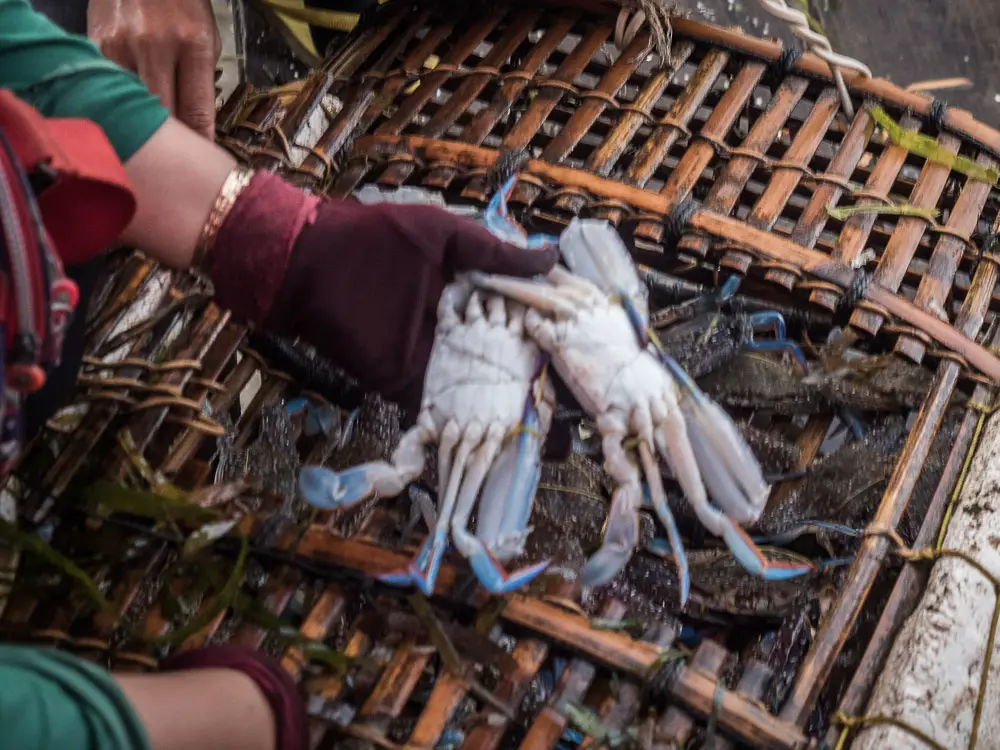
Sorting through the crabs to find the largest ones in the pot
The next step is deciding on the weight of crabs you would like to buy. A rough guide is about 500 grams per person with slightly less if you are going to feast on other seafood as well.
From here the vendors will move quickly, so be sure to take your time, and remain firm on what you asked for.
In our case, we had insisted on choosing the larger crabs in the vendor’s pot, and we had to go back and forth replacing smaller crabs with larger ones. We had also asked for 1kg, so it came as a (small) surprise when the weight was approaching two kgs. The vendor assumed we were going to be okay with this, but we took in good humour and had the smallest crabs put back into her pot.
The next step is the price. There are levels of negotiation that take place at all Asian markets, and this one was no different. The first price mentioned by the vendor was $10 per kg, and we ended up at $7 per kg fairly easily, so this would be a reasonable price to aim for, which I’m assuming still includes a small foreigner margin.
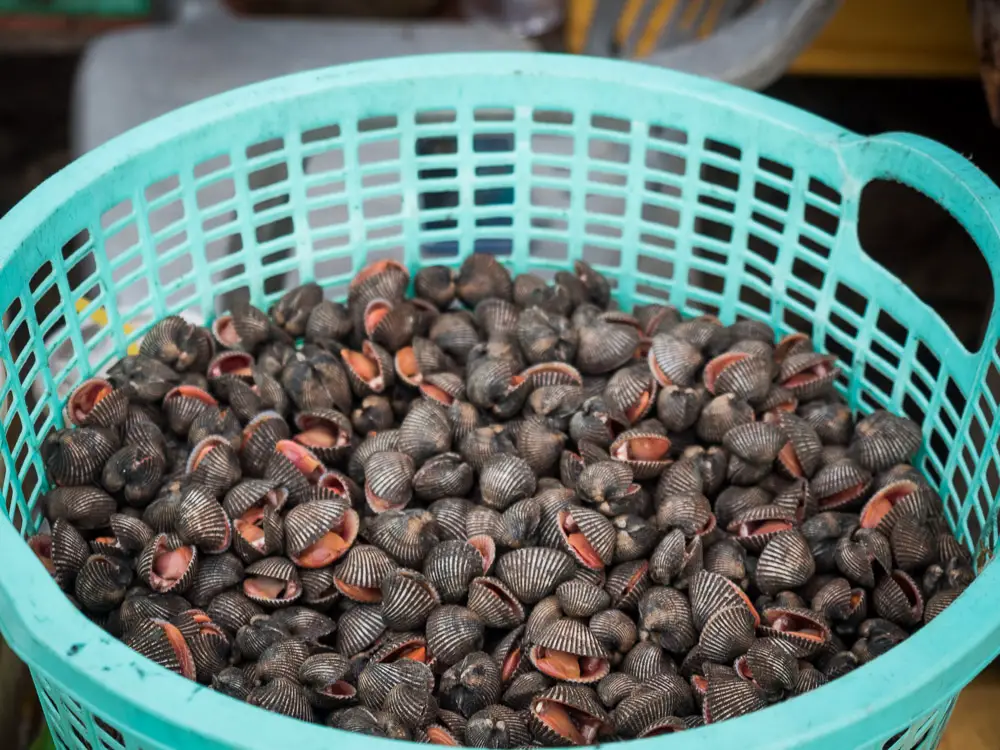
We chose to enjoy these clams alongside our crab
Then, if you are having other fresh seafood, make your choice and pay the vendor. We decided to add blood clams to our order and paid $3 per kg.
Cooking Your Order
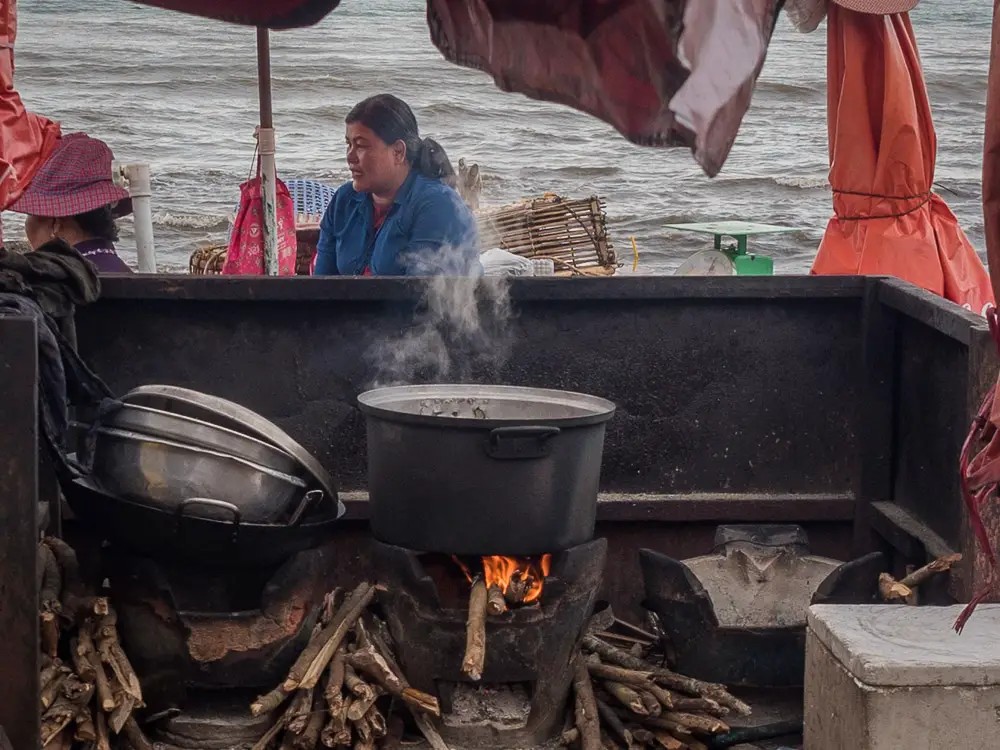
One of the basic cooking stations along the pier.
If you are planning to eat your order at the market, mention this to the vendor and they will take you to the cook they generally use. You can choose your own, of course, and there are at least half a dozen to choose from.
We decided on having our crabs cooked with a Kampot pepper based sauce, with the clams stir fried in the same sauce along with a few greens.
You can have the crabs cooked more simply if you want.
The charge for cooking was around $2 per serve and we ended paying just over $3 for both dishes.
The cooks will prepare the crabs and bring to your table.
If you are planning to enjoy some of the barbecued seafood, place an order and indicate where you’ll be sitting. The barbecue will come quicker than the crabs, so order second if you want to have an all in feast.
Finding a Table to Eat
As mentioned, there are many seating options, and the price of taking a seat is to order a drink from the table owners. Beer, fruit juices, and soft drinks are available as well as tea.
The table owners also offer rice with your meal as well as providing a finger bowl of water and limes to help clean your fingers after devouring the crabs and other dishes.
Eating crabs in Kep. The Taste Test
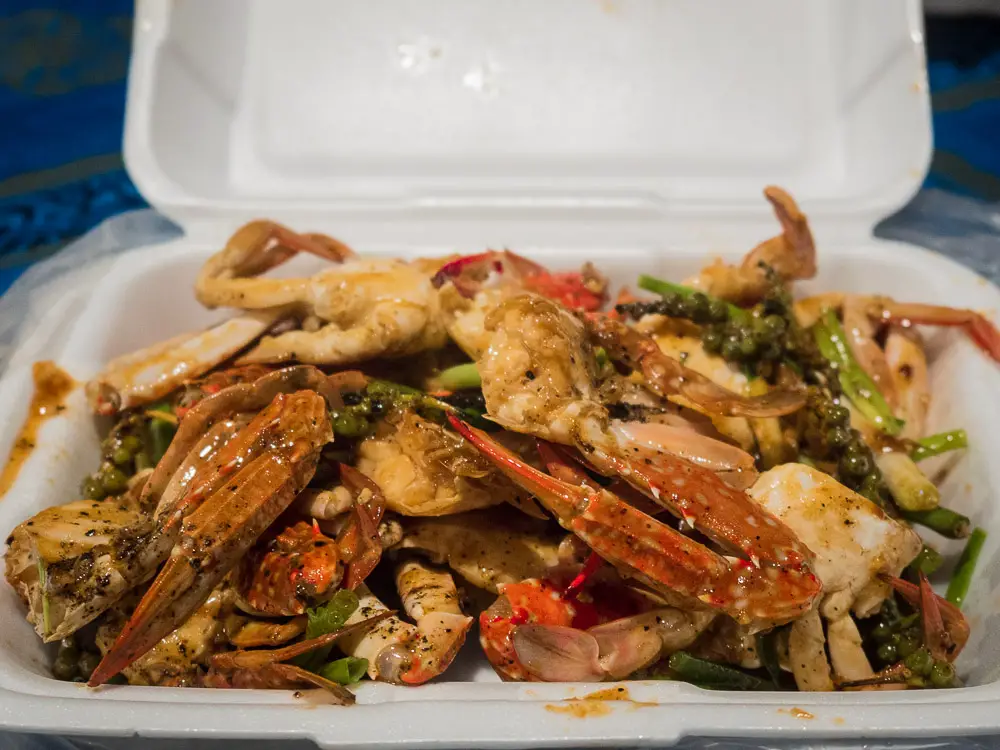
The crabs were packed full of meat, and were cooked to a juicy perfection. The pepper sauce had a slight bite at the back of the throat but was light enough to not overpower the sweet crab meat.
By having the Kep crab stir fried, the cook had pulled the crab apart and chopped it up into easy to eat portions. This will help the eating experience especially if you don’t quite know how to eat crab, which can be a confusing affair for the first time.
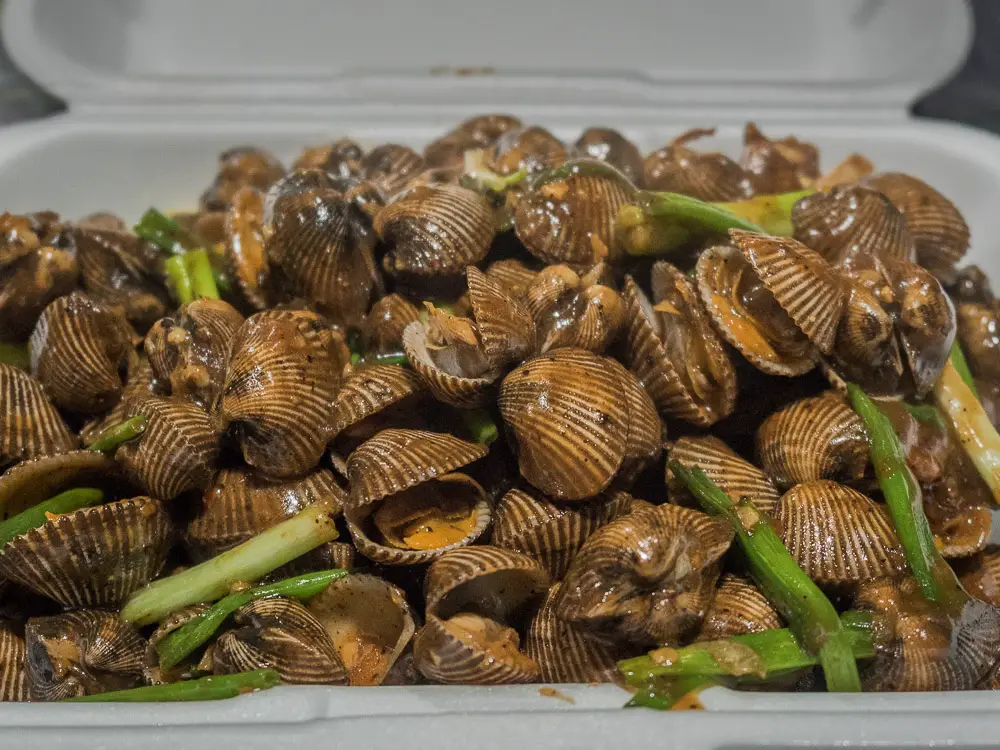
The clams were simply stir fried in the same pepper sauce.
Restaurants Next to Crab market, Kep
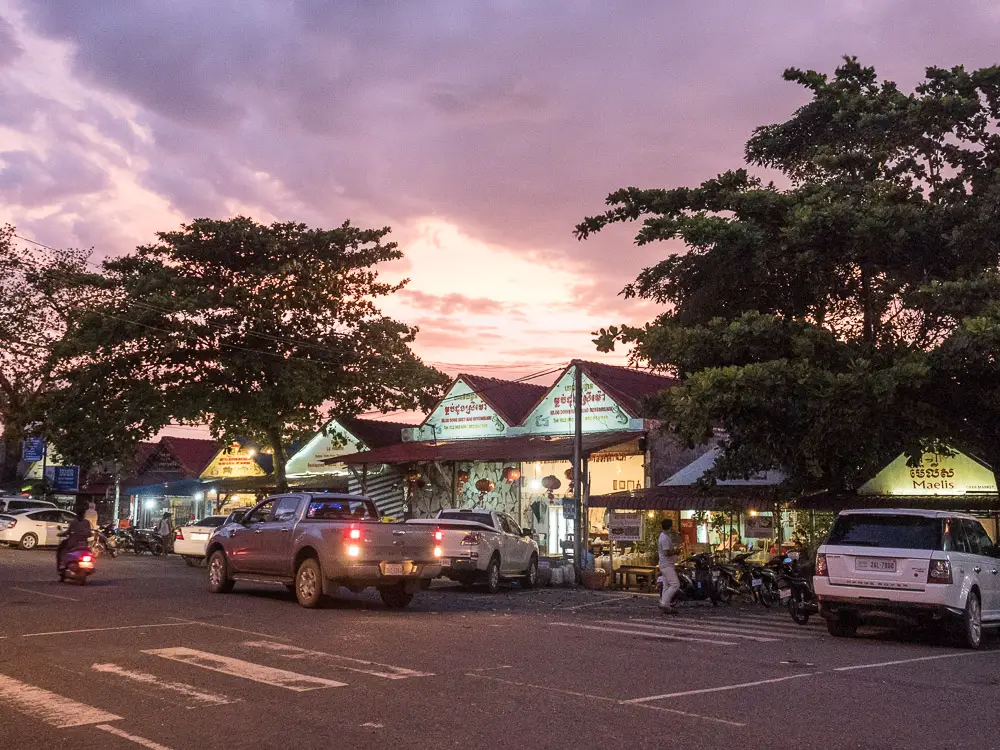
The line of restaurants nest to the Kep Crab Market
Next to the crab market is a row of restaurants that open at night and serve more variety than just seafood. We ended up having a drink in one of the restaurants and watching the sunset, before heading into the market for our dinner.
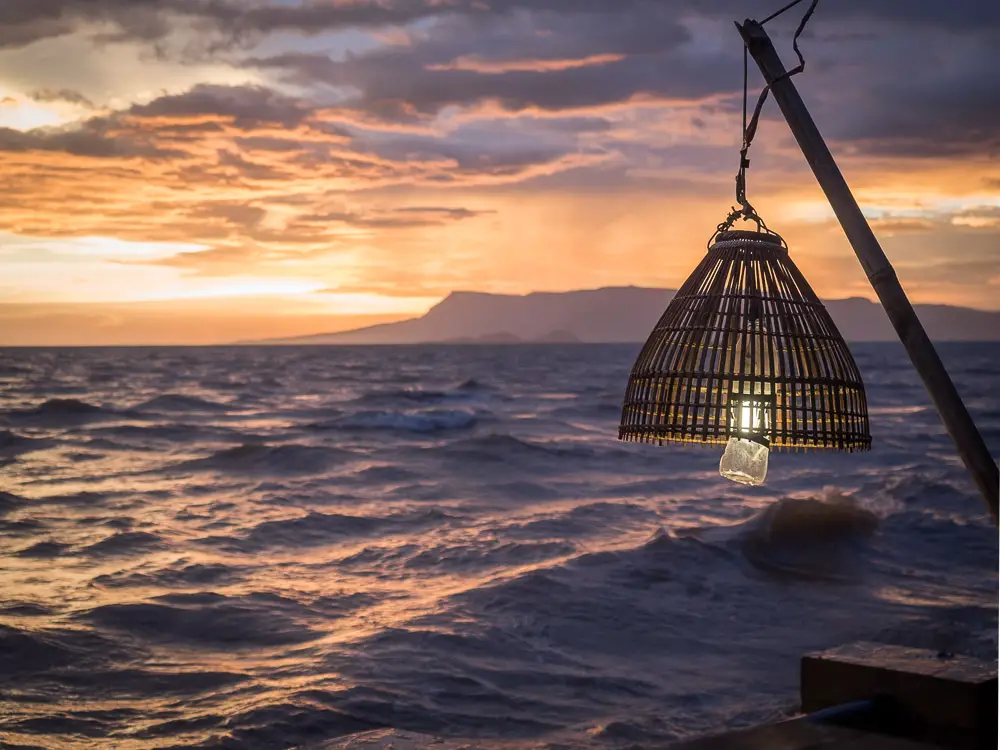
Taking in the sunset before heading off to the market for a crab dinner
Where to stay? Kep or Kampot?
Kep and Kampot are a 45 minute tuk tuk ride away from each other so it is possible to stay in either location to and visit the market. We chose to stay in both locations, and decided on our Kep accomodation because it was only 500 meters from the market, with a large pool, and in a quiet location.
In our view, visiting and eating at this Kep market was easily at the top of the best things to do in Kep.

